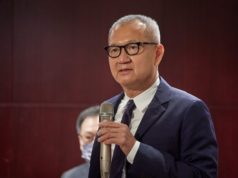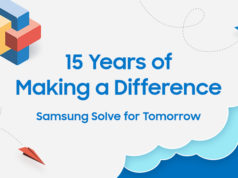Earlier this week, the Swartz Center for Entrepreneurship, a “hub for entrepreneurship” in the center of Carnegie Mellon University’s Pittsburgh campus, was officially launched in an event attended by upwards of 600 students, alums, and professors. They’ll have even more to celebrate when construction on the 300,000-square-foot business school where it’s being housed is completed in 2018.
At the center of all: Jim Swartz, who cofounded the storied venture firm Accel Partners in 1983 and who last year donated $31 million to CMU, where Swartz nabbed his master’s degree in 1966. The native Pennsylvanian says the gift is designed to help Pittsburgh cement its new role as a thriving tech center. (Google, Microsoft, and Uber are among a growing number of companies with local campuses.)
We talked with Swartz earlier today about the donation, as well as whether he remains active on the venture scene, and, if so, what he makes of the current state of things. Our chat has been edited for length.
TC: You founded Accel with Arthur Patterson in 1983. When did you step back from the firm, and do you still invest in startups?
JS: It’s been a continuous process and I’m still involved to a significant degree. Arthur and I ran the firm, then we brought in Jim Breyer, and the three of us ran it, then he ran it, then we created an operations committee that ran it, and now there’s a fourth generation. But we’re still involved, [mentoring the VCs there], helping wherever we can with new projects, or selling our ways into things. We’re not under the gun anymore, though, which is a good feeling.
TC: How active an angel investor are you?
JS: I’m not San Francisco bubble crazy, but I’m reasonably active, funding two or three companies a year, something like that. I still look for really good technology and great people.
TC: What do you make of the current environment?
JS: It won’t end well. I’ve been at this since 1970 and Arthur and I have seen five or six cycles at this point. This one is prolonged for sure. In truth, I thought [the last bubble] was over in 1997 and let it run and thank goodness because we made a ton of money. I think the difference here is Dodd Frank, which has made it incredibly different and unsavory to take companies public. The regulatory environment is too difficult. Before, if you had $50 million in revenue and could show a profit, you could go public; today that number is what, $200 million, $300 million?
New funds are filling the funding gap. Accel Growth is one of them, and lot of other firms have taken advantage of things, too. But it creates questions about whether [founders] ever want to go public and how investors will get out.
TC: Do you see an actual “crash”? It’s hard to see how that happens, with new capital continuing to come in.
JS: Just because it doesn’t burst doesn’t mean it’s not a bubble.
The private market deflates, it doesn’t crash. It just takes time for all this to work itself out of the system. You’ll get to the point where people conclude these unicorns aren’t as valuable as we thought. That’s happening around the edges already and we’ll see more of that. But I don’t think you’ll see a collapse. Instead, people will forget about them, reporters won’t write about them, they’ll just disappear, and returns will go down. Over time, some funds will disappear that didn’t make money.
TC: And the Bay Area’s housing crisis continues in the meantime, with new startups replacing those that stop raising funding.
JS: It might soften or level off, but I agree. In comparison, Pittsburgh has become an incredibly desirable place to live over the last five to 10 years. I don’t have any stars in my eyes about it becoming Silicon Valley, but the stage is set for a run there, largely because of Carnegie Mellon, but also [the University of Pittsburgh] and [Pitt’s] medical complex. There’s an awful lot of intellectual property there.
TC: Sounds like your new center is sort of in the heart of the action, though I understand your $31 million gift will be used for a number of things, including scholarships and fellowships for students, faculty, entrepreneurs-in-residence, infrastructure projects . . .
JS: [The gift] is the result of a long-term understanding between myself and the university . . . there are a lot of things we can do. It really kicked off when Subra Suresh came in [as CMU president in 2013] with a vision for creating a modern business school that’s in the center, and not at the edge, of campus, as at Harvard and Stanford.
Everybody talks about cross-disciplinary activity and busting down silos, but Carnegie Mellon is way ahead of everyone on that front.






